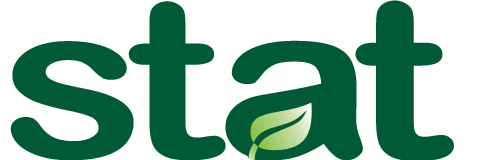Upper U.S. Midwest Organic Grain and Feedstuffs
DES MOINES - Nov 30/11 - SNS -- Bi-weekly USDA report on organic grain and feedstuffs prices in the U.S. upper midwest.
Upper Midwest Organic Grain & Feedstuffs Report (Bi-Weekly)
Weighted Average Report for the Week Ending 11/26/11
For the following states: WI, MN, IA, SD, ND, NE, KS, MO
***ATTENTION***
This report will be discontinued as of January 1, 2012. All of the
information contained here will be available in one combined nationwide
report, the National Organic Grain and Feedstuffs report, found here:
http://www.ams.usda.gov/mnreports/lsbnof.pdf
Compared to two weeks ago, organic grain and feedstuffs prices were mostly
steady. Feed grade corn averaged $.50 higher, feed grade soybeans $.20
lower on a light test. Demand for corn and soybeans continues to be good,
with moderate demand for most other commodities. Offerings were light to
moderate with a light to moderate test on most commodities near the end of
the reporting period due to the Thanksgiving holiday. Harvest in Minnesota
is essentially completed with just a few smaller producers finishing up.
Weather has been unusually mild and dry in most areas for this time of year.
Monthly and quarterly prices are located below. All prices FOB the farm gate
and negotiated spot market.
FOB FOB
Price/Bushel Weighted Average
11/26/11 11/12/11 11/27/10
Organic Corn
Food Yellow
Feed Yellow 11.00- 12.00 11.57 11.11 5.85
Organic Soybeans
Food Grade
Feed Grade 19.00- 20.00 19.54 19.72 16.22
Meal ($/ton) 900.00- 900.00 900.00 814.09
Roasted ($/ton)
Organic Oats
Feed Grade 5.50- 5.50 5.50
Organic Barley
Food Grade
Feed Grade 8.00- 10.25 9.06 8.00
Organic Brown Flax
Food Grade
Feed Grade
Organic Golden Flax
Food Grade
Feed Grade
Organic Wheat
Food Grade HRS 15.00
Feed Grade HRS
Food Grade SRW 8.75- 9.25 9.05
Feed Grade SRW
Food Grade HRW
Feed Grade HRW
Food Grade SWW
Food Grade HWW
Food Grade Durum
Organic Rye
Feed Grade
Organic Field Peas
Feed Grade 12.50- 12.50 12.50 11.04
==============================================================================
Organic Alfalfa Per Ton/FOB
Supreme
Premium
Good
Fair
Utility
Organic Grass Hay
Premium
Good
Fair
Organic Straw
Table 1: Alfalfa guidelines (for domestic livestock use and not more
than 10% grass)
Quality ADF NDF *RFV **TDN-100% **TDN-90% CP
Supreme <27 <34 >185 >62 >55.9 >22
Premium 27-29 34-36 170-185 60.5-62 54.5-55.9 20-22
Good 29-32 36-40 150-170 58-60 52.5-54.5 18-20
Fair 32-35 40-44 130-150 56-58 50.5-52.5 16-18
Utility >35 >44 <130 <56 <50.5 <16
*RFV calculated using the Wis/Minn formula.
**TDN calculated using the western formula.
Quantitative factors are approximate, and many factors can affect
feeding value. Values based on 100 % dry matter (TDN showing both 100%
& 90%). Guidelines are to be used with visual appearance and intent of
Sale (usage).
==============================================================================
Monthly and Quarterly Organic Prices (Weighted Average)
Nov 11 Oct 11 Nov 10 3rd Qtr 2011
Food Grade Corn
Feed Grade Corn 11.24 11.22 5.89 12.40
Food Grade Soybeans 22.45 20.41
Feed Grade Soybeans 19.69 19.28 16.36 19.05
Roasted Soybeans (ton)
Soybean Meal (ton) 821.25 833.08 802.20
Feed Grade Oats 5.50 4.74
Feed Grade Barley 8.71 5.11 8.28
Food Grade Brown Flax 25.34 26.11 26.49
Feed Grade Brown Flax
Food Grade Golden Flax 26.29
Feed Grade Golden Flax
Food Grade Wheat (HRS) 15.00 12.84 13.66
Feed Grade Wheat (HRS) 11.31
Food Grade Wheat (SRW)
Feed Grade Wheat (SRW) 9.05 8.18 8.92
Food Grade Wheat (HRW) 12.41 12.00
Feed Grade Wheat (HRW) 9.48 9.17 8.25
Food Grade Wheat (SWW)
Food Grade Wheat (HWW) 15.81
Food Grade Durum Wheat
Food Grade Rye
Feed Grade Rye 8.41
Feed Grade Peas 11.12 11.51
Mid Oleic Sunflowers
==============================================================================
Developed in partnership with the University of Minnesota, Endowed
Chair in Agricultural Systems, School of Agriculture.
Source:
---
STAT News Service
Only active subscribers can read all of this article.
If you are a subscriber, please log into the website.
If you are not a subscriber, click here to subscribe to this edition of the STAT website and to learn more about becoming a subscriber.

